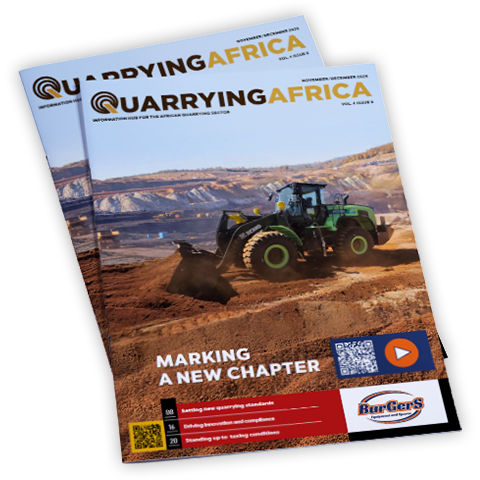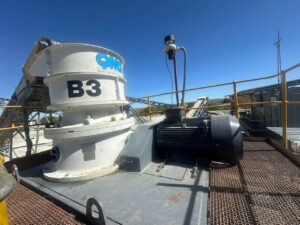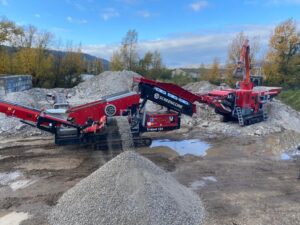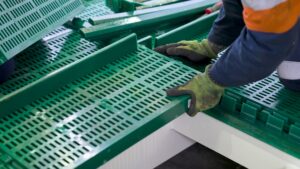In a positive development for the quarrying and small surface mining sector in South Africa, ASPASA is hosting its first annual conference on October 31, 2024. To be held at Misty Hills, Muldersdrift, Johannesburg, the ASPASA Conference seeks to get together small surface mine managers, supervisors, health providers, training providers and the mining supply chain at large, to discuss technological advancements that will affect the industry in the run up to 2050.
“The idea behind the conference is to try and revive the Institute of Quarrying Southern Africa (IQSA) mini conference and the CEO Breakfast sessions that ASPASA used to host in the past,” explains Van den Berg. “The aim is to address a key topic in detail every year after the main IQSA conference held every April. This year, it was clear that there was need to unpack the role of Artificial Intelligence (AI) in the future of our sector after the topic took centre stage at the IQSA Conference in Durban.”

Setting the scene
A panel discussion comprising some of the big names in the industry will set the scene for the conference with the topic, ‘Quarrying in the past, present and future’. The panel will comprise renowned mining executives, including ASPASA MANCOM member Glenn Johnson, IQSA board members Afrimat’s Felix Motsiri and PPC’s Lazarus Meko, as well as representatives from the Department of Mineral and Petroleum Resources and the Mine Health and Safety Council.
The panel will unpack some of the significant challenges and limitations faced by the quarrying industry in the past, and how they shaped the industry’s evolution and current practices. Here, the panel will reflect on the history of quarrying, highlighting lessons learnt and how they have influenced current operations.
“The panel will also look at how quarrying operations are currently addressing environmental and social concerns such as habitat destruction, water management and community engagement, exploring the steps being taken to mitigate environmental and social impact and highlighting cutting edge solutions available for the industry,” says Van den Berg.
In addition, the panel will then look at some of the emerging trends, technologies and sustainable practices that are likely to shape the future of quarrying and how the industry will adapt to meet the increasing demand for resources while minimising its environmental footprint.

The impact of technology
According to Van den Berg, there is an apparent shift towards technology to improve efficiencies and protect employees in the quarrying and mining industry at large. Technology opens the door to data, which in turn requires interpretation.
“We therefore see machine-learning opportunities and AI guiding the way. Do we all know the process flow of converting from manual to automation? These are some of the issues that we seek to unpack at the conference through our knowledgeable speakers for the day,” explains Van den Berg.
Alex Hall, CEO of Concrete.ai, will discuss how AI is being used to reduce carbon footprint in concrete.
Oscar van Antwerp will unpack the topic, Mineral Resource Management and Technical Advancements for the Quarry Industry. Optimal utilisation of the resource is a key aspect for sustainable mining.
“Globally, AI is taking root across industries, and mining will not be an exception. For operations to be viable, teams must move earth and crush rock as efficiently as possible. Attendees to the conference will learn more about the cost-saving opportunities of utilising AI and how to change training programmes to suite the Generation Z (Zoomers) and the Alpha skills sets required. Quarrying is such a tough market and the industry needs to use all the resources at its disposal in order to be competitive and to stay relevant,” says Van den Berg, adding that the regulator, the DMRE, is driving technology to protect all stakeholders in the mining value chain.

Paving the way
Ahead of the conference, Van den Berg is inviting the supply chain to take the opportunity to exhibit some of their technologies that will pave the way for a productive and efficient future for the industry. She is especially keen to see exhibitors showcasing technologies that save lives, while driving equipment efficiencies.
In planning for the future of operations, she says, mines and quarries seeking to turn challenges into opportunities are increasingly looking to the suite of advanced technologies related to AI, such as machine-learning through data sources.
While there is no single technology solution to industry challenges, when effectively integrated into workflows traditionally requiring human intelligence, AI‑related technologies are now enhancing the industry’s capacity to accomplish tasks, make decisions, create engaging interactions and generate stronger business outcomes.
In conclusion, Van den Berg is especially grateful to the conference’s main sponsor, Rand Mutual Assurance (RMA), the administrator of claims for occupational injuries and diseases according to the Compensation for Occupational Injuries and Diseases Act (COIDA), which has made a significant donation towards the conference.






